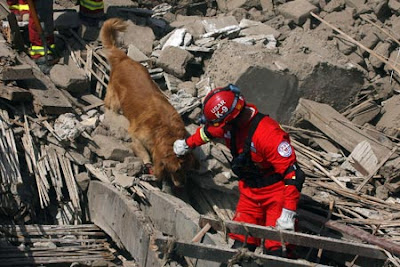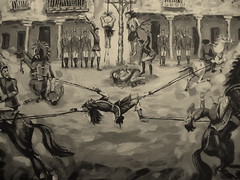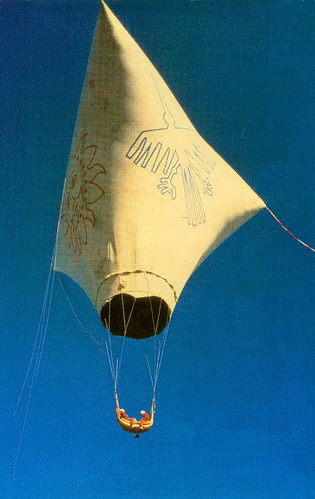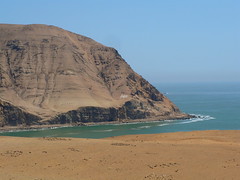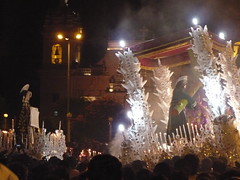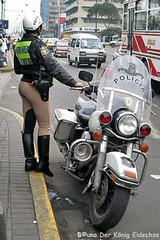The quality of the Incas stone work is what many people notice when visiting their ruins, or even just walking through the streets of Cusco. But how did they manage to carve so accurately, to a degree we can only just achieve today with sophisticated technology such as lasers? How could they cut the stone bricks and place them so tightly together that you couldn’t slide a sheet of paper between them – that not even air can blow through?
From the works of Hiram Bingham to many recent studies, several hypothesis have been put forward. But could the answer be not so different from our modern lasers?
Category: "History"
Intihuatana
The Intihuatana (or Intiwatana) is referred to as the Hitching Post of the Sun – as that is what many experts think its function was, to symbolically tie the sun the the earth at the two equinoxes so it could not move further in the sky. At the time of an equinox the perfectly carved 14 degree angled stone has no shadow, yet does have one all day and all year round when not an equinox.
Sacred Rocks
In front of Huayna Picchu is a massive slab of rock that is said to take the shape of the mountains behind it. This rock, like all large rocks, was sacred to the Incas.
A major part of Inca beliefs were that such rocks store vast sums of energy that can be transferred to people. All things in nature were similarly thought to be special in some way, from water to the Sun.
Of course, the biggest rocks that exist are the Andes themselves, and this is why the Incas built everything at the tops of them, the pinnacles of the stores of energy.
Machu Picchu
Machu Picchu means “old peak” in the Inca language of Quechua, as Huayna Picchu the thin point mountain at the other side of the ruins means “young peak”. These are not Inca names, we don’t know what they called the mountain, nor their city, rather the name was given by a geographer and cartographer working to document the region…
Pisaq – Inca Ruins
The spectacular ruins of the grand Inca city of Pisaqa. Perched on a mountain ridge high above the Urubamba valley…
Puka Pukará
This small set of ruins sits on a hilltop. It is assumed it was a fort as it commands views of the entire area and its name in Quechua means “Red Fort”. It isn’t as simple as that though as the place is quite small. Perhaps it was more of a guard post.
There are numerous storage areas for storing grain and cereals, it also has some places to sleep.
Sacsayhuamán
Pachacútec, expander of the empire, ordered the site’s construction in the mid-1400’s. The complex took almost 100 years to complete with thousands of men. Many of the blocks were taken from as far as 32km away. Some blocks are the size of large buses and weigh hundreds of tons. No-one knows how they managed to move them, not even how they managed to cut the bricks with laser-precision. All that survives of the place is what the Spanish weren’t able to destroy – what they didn’t have the technology to destroy. What you see in my photos is a mere 20% of what once stood here.
Qoricancha – Templo del Sol
The Temple of the Sun, mostly destroyed by a Dominican church built on top, is a prime example of the clash of cultures that took place; and who dominated who.
Qoricancha was a monumental building, several blocks away from the main square of the Inca city. It was where the highest priests in the empire were based…
Pachacutec
Pachacutec was the Inca emperor who turned Cuzco from a city state to an empire that spanned from Ecuador to Chile. At one end of the Av. El Sol is a gigantic statue of him that you can visit and climb.
Cusco’s Monasterio de Santa Catalina
This monastery was finished in 1610 and built on top of the destroyed Inca ruins of Acllawasi. This monastery is famous for its colonial religious art, particularly its collection of the Escuela Cusqueña paintings. These are some of the greatest works of Amerindian art in Cuzco – a mix of taught European styles with indigenous influences.
Regrets of a Conqueror
In Cuzco in 1589, Don Mancio Serra de Leguisamo—the last survivor of the original conquerors of Peru—wrote in the preamble of his will, the following:
“We found these kingdoms in such good order, and the said Incas governed them in such wise [manner] that throughout them there was not a thief, nor a vicious man, nor an adulteress, nor was a bad woman admitted among them, nor were there immoral people. The men had honest and useful occupations. The lands, forests, mines, pastures, houses and all kinds of products were regulated and distributed in such sort that each…
Raqchi Ruins
We travelled closer and closer to the imperial city of Cuzco, along a similar route to which Inca founder and sun-child Manco Cápac would have walked. After rising from Lake Titicaca he headed west, looking for the ideal place to found his empire. His requirements were simple, the location had to have sufficient fertile surface soil – he would plunge his staff into the ground as he walked, always hitting rock in this barren landscape. Only when he reached the site of Cuzco was the soil abundant enough to settle.
Along this route is Raqchi, site of some pretty unique Inca ruins. These are the best, and to this extent only, surviving ruins that have adobe walls still sitting on a base of Inca rock walls. This was a normal feature in Inca architecture, all tall buildings were built like this, but thanks to the weather, and to the Spanish, little survives today.



